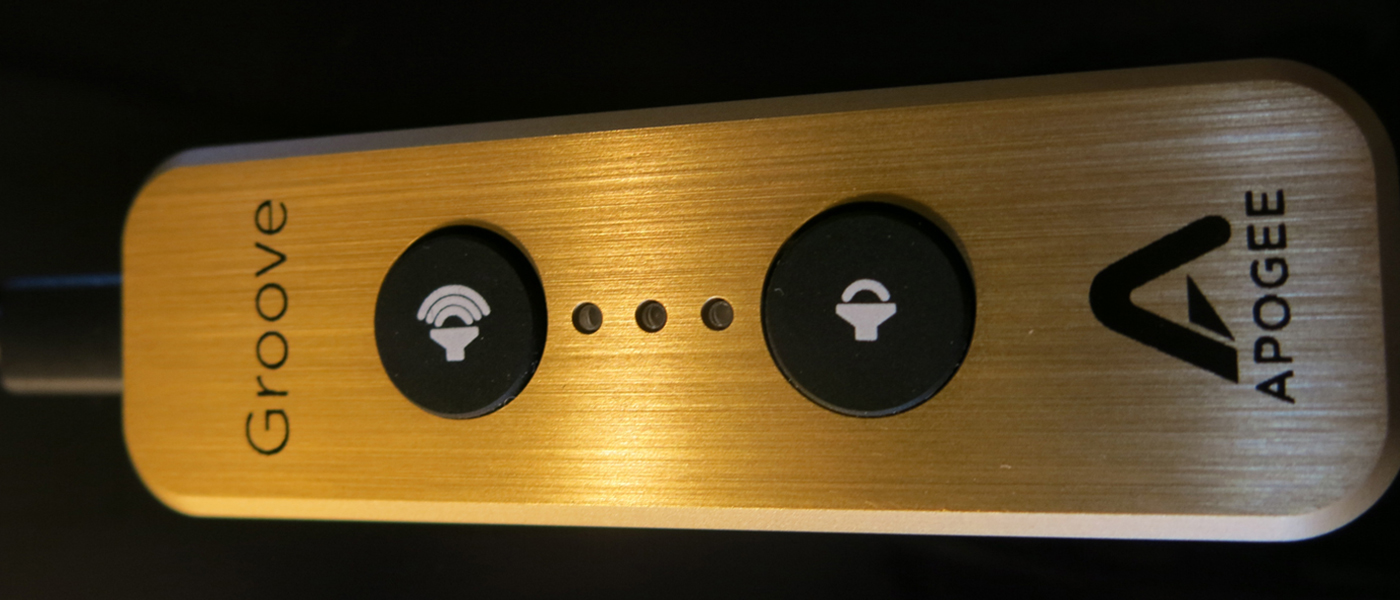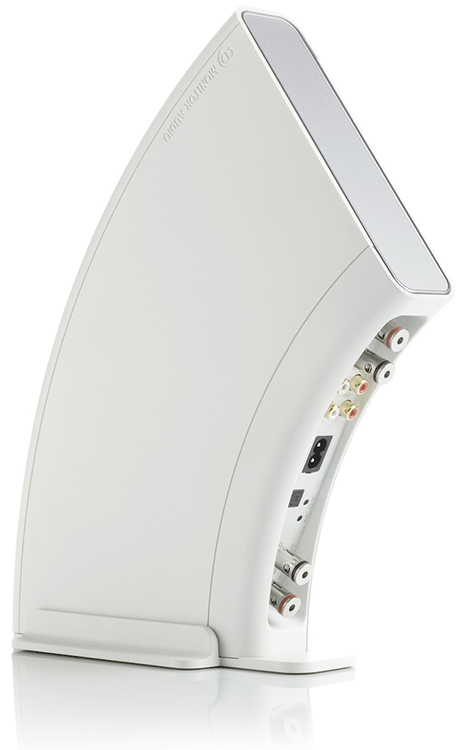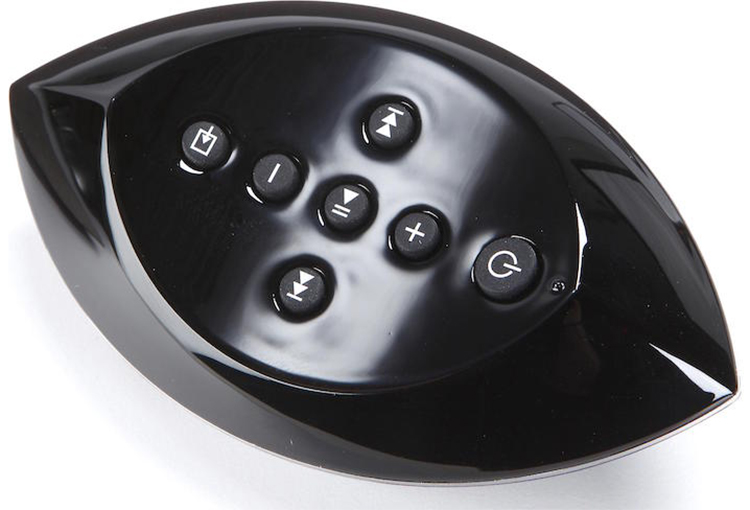Some of them even have enough power and resolution to anchor an audiophile’s primary 2-channel system.
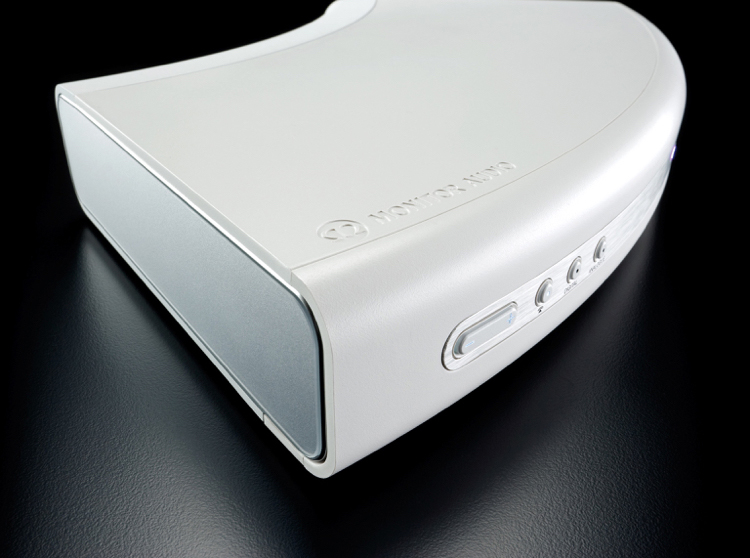
Monitor Audio Airstream A100 Integrated DAC Amplifier
- Reliable AirPlay streaming
- AirPlay, USB, optical digital, and analog RCA inputs
- AirStream direct mode to allow streaming outside of WiFi networks
- Swoopy styling with excellent build quality
- Class AB amplification
You probably know Monitor Audio best for their finely-crafted loudspeakers such as the Silver 1. The British company recently introduced their first standalone electronic component, the Airstream A100 integrated streaming DAC amp.
Design:
Two-channel Remote-controlled Integrated Streaming Dac Amplifier
Rated Power:
2 X 50w, Impedance Not Specified
Amplifier Topology:
Class AB
Frequency Response:
20 Hz – 20 kHz
DAC:
28/56-bit
Supported File Formats:
AAC, Apple Lossless, MP3, FLAC
Server Inter-Operability:
DLNA 1.0/1.5, UPnP 1.0 Music Server, AirPlay
Inputs:
USB for iDevices, Toslink Optical Digital, Analog Stereo RCA
Outputs:
4 – 8 Ohm Speaker, Analog Stereo RCA
Dimensions:
2.2″ H x 14.1″ W x 8″ D
Weight:
4.2 Pounds
MSRP:
$499 USD
Company:
SECRETS Tags:
Monitor Audio, AirPlay, Integrated Amplifiers, Streaming, DACs
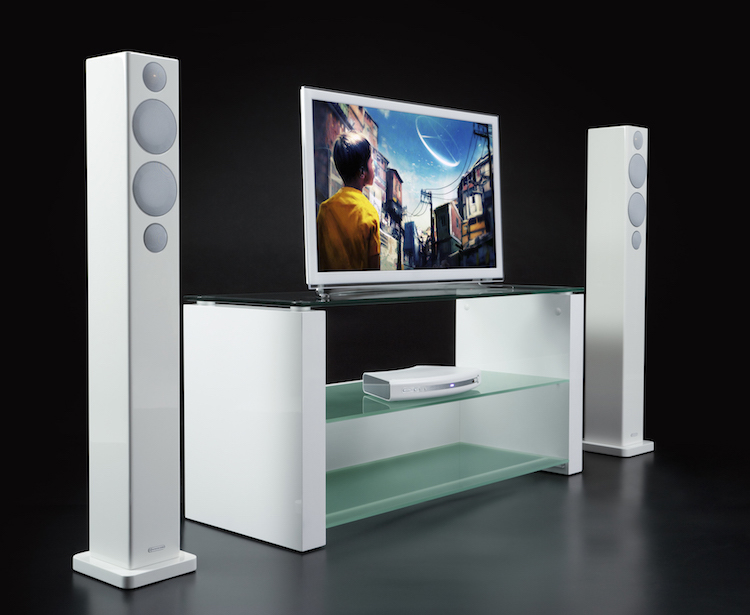
Integrated amps combine preamp and amplifier in one chassis, resulting in shorter signal paths and less clutter in-room. Monitor Audio takes that philosophy two steps further by including a DAC and AirPlay streaming receiver inside the A100’s compact, swoopy case. The noise and distortion performance of integrated analog audio circuitry has improved to the point where … no, these devices don’t measure as well as good separates, but they have closed an awful lot of the gap. (See Part II of Dr. David Rich’s AVR Build Quality series for detailed information on large-scale integrated circuits vs. discrete parts.)
However, the sheer number of new compact integrated DAC-amps makes it hard for any one of them to stand out. Monitor Audio found three ways to elevate the Airstream A100 over the compact DAC-amp pack. First, A100 offers full-fidelity lossless streaming via Apple AirPlay and Monitor Audio’s Airstream Direct mode. Second, Monitor Audio fitted the A100 with a traditional Class AB amplifier rather than the usual Class D amp. Class D amps are efficient and compact, but rarely measure as well as a proven Class AB circuit. Third, Monitor Audio packaged the A100 into a swoopy arc with glass endcaps, rather than a me-too rectangular box.
Monitor Audio offers the A100 in white or black. My review amp was white. The finish is more matte than Apple’s glossy white, but it nicely complements current aluminum Macs and iDevices. The A100 comes nicely packaged, with the main unit wrapped in cloth and molded Styrofoam padding with recesses for the remote and vertical stand.

The A100’s front panel has a decorative brushed metal trim strip. The power button and covered USB input sit on one side, the volume/source controls on the other. An intensely bright elliptical LED sits centered on the front panel. The LED changes colors to indicate the network status and input selected. It also pulses during firmware updates.

The Airstream A100 offers multiple input and output options. It accepts AirPlay streams, optical digital (up to 24-bit/96kHz), and stereo RCA for a phono preamp or other source. You can also hook up an iPod or iPhone directly to its USB input for playback and charging. No Bluetooth, but I see no reason to choose lossy Bluetooth streaming over lossless AirPlay anyway.
The A100 also includes a volume-controlled stereo line-out, so you can use the A100 as a streaming DAC/preamp for active speakers or a bigger amplifier. Bass management is the only notable feature the A100 lacks. It would be great if the A100 offered a lowpass filter on the preouts for use with a subwoofer, and a highpass filter option on the speaker outputs. But few 2-channel components in this price/size class offer bass management.
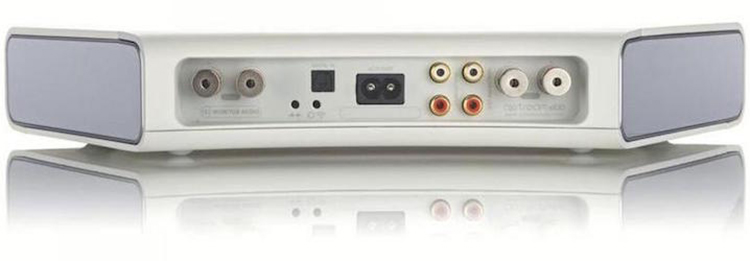
The speaker terminals are spring-loaded for bare wire, and drilled for banana plugs. The spring-loaded terminals do not accept spade lugs. The swoopy chassis hangs over the outer terminals, so bare wire is a tight fit. I recommend banana plugs.
Monitor Audio includes a plastic stand to hold the A100 vertically. However, rubber feet remain on the “bottom” of the unit, so vertical mounting only makes aesthetic sense with the “bottom” against a wall or otherwise hidden.
The A100’s included remote is black and shaped like a squashed football. It fits well in the hand, with all buttons within thumb’s reach. For someone looking to use the A100 in a more complicated system, i.e. with a TV/set-top box or disk player, Harmony remotes can control the A100.
George Haight of Monitor Audio came over and showed me how effortlessly the A100 joins a WiFi network. He connected my iPhone to the front USB port, pressed a button on the A100, clicked “Allow” on the iPhone screen, and…that’s it! A few seconds later the A100 showed up on the network as an AirPlay speaker.
Monitor Audio’s Airstream A100 also offers "Airstream Direct" mode to stream lossless music directly to the A100 when there’s no WiFi network available, or in secure environments where you can’t easily add devices to the network. However, you cannot simultaneously connect a device to the A100 over Airstream Direct and a second network. So you lose internet access on the streaming device while it’s connected to the A100.

In practice I found Airstream Direct seamless on a Mac but clunky on an iDevice. That’s Apple’s fault, not Monitor Audio’s: iOS makes you go deep into the Settings menu to switch WiFi networks. That minor reservation aside, Airstream Direct is a wonderful feature.
For a streaming media receiver, robustness is at least as important as sonics. Who cares how great a system sounds if the sound constantly drops out? I had the Monitor Audio Airstream A100 both before and after I optimized my home WiFi network for AirPlay streaming. Before we sorted the network, I found the A100 did a slightly better job of locking into a stream and holding it than Apple’s AirPort Express, especially after the first five or six seconds of playback. I don’t know the technical reason why the A100 outperformed the AirPort Express. Perhaps it has a better antenna, or a larger buffer? After optimizing the network, both AirPort Express and Monitor Audio A100 offered completely stable AirPlay streaming.
All the tracks I discuss below for critical listening came off of our music server in Apple Lossless format. I paired the Monitor Audio Airstream A100 with three very different bookshelf speakers: Monitor Audio Silver 1, vintage KEF RDM Two, and Soundfield Audio Monitor 1. The notably, the A100 had no trouble driving the Soundfield Audio Monitor 1, which has complex hybrid active/passive crossover and built-in woofer amps, like the Salk Sound Exotica 3. Speakers with powered woofers can trouble some Class D amps, because the load impedance the amp “sees” is so much higher when it’s driving the high-level inputs of an amplifier instead of a woofer. Class AB amps don’t have this issue.
While Monitor Audio’s A100 fits lots of features in a compact box, its most compelling feature is excellent sound quality. The A100 was admirably transparent while driving all three speakers. It moved out of the way and let each speaker pair shine – and stumble – in its own way.

Sphere Ensemble is an 11-player string quartet from Colorado I discovered through a friend in Denver. “Divergence” is their debut recording, and I highly recommend it for both content and sonics. It includes traditional string ensemble fare such as Elgar’s Serenade for Strings, pop covers, and even an acoustic mashup of Mozart’s “Eine Kleine Nachtmusik” with Daft Punk’s “Get Lucky.” ”Divergence” is mastered beautifully, with real dynamic contrasts and a nice sense of space.
On “Butterfly Jig,” an original bluegrass-influenced composition, the A100 allowed all three speakers to showcase their talents. The Monitor Audio Silver 1 shined in reproducing violin harmonics with great clarity and capturing the overall airiness of the recording. However, there was too much upper midrange energy, which cooled down the cello sound. The KEF RDM Two was a mirror image: exceptional body and warmth from the cello section, but violins a little closed-in with relatively less air to their sound. The Soundfield Audio Monitor 1 sounded a lot like the vintage KEF speakers from the upper midrange down, except more spacious. In the treble they were just slightly less airy and refined than the Silver 1, but substantially similar. If that reads more like a speaker review than an amp review, that’s exactly right. The Monitor Audio A100 simply drove all three speakers to their potential, without adding new errors or omissions.

Temple of the Dog was a one-off album to commemorate late Mother Love Bone frontman Andrew Wood. It featured members of Soundgarden and Pearl Jam. While everyone who was alive in 1992 knows the Chris Cornell/Eddie Vedder duet “Hunger Strike,” the whole album is solid. “Temple of the Dog” is also well-mastered, with considerably greater dynamic range than most rock albums from this decade.
“Times of Trouble” is built off the same guitar riff as Pearl Jam’s “Jeremy” B-side “Footsteps.” Stone Gossard wrote the music and gave it to Chris Cornell and Eddie Vedder at about the same time. While “Footsteps” is a very spare arrangement, “Times of Trouble” is a considerably lusher and rounder variation on the theme. Listening through the Monitor Audio Silver 1, I thought I perceived a slightly greater sense of ease when Cornell really gets going over Matt Cameron’s pounding beats through my reference study electronics (Meridian Explorer USB DAC and Pro-Ject Amp Box SE) compared to the A100. The dual mono Hypex UcD180 modules in the Pro-Ject amp make it about twice as powerful as the A100. That may explain the difference. The difference evaporated on the KEF RDM Two, which are at least 4dB more sensitive than the Monitor Audio Silver 1. The RDM Two threw a soundstage that was comparatively lacking both width and depth and again sounded a little closed in. When listening to the smooth, uncolored combination of Monitor Audio A100 and Soundfield Audio Monitor 1, the sound was so clear and balanced that I found myself picking an instrument and following it through the song. And then replaying the song and following a different instrument.

“No Cities to Love” is Sleater-Kinney’s first album in a decade. It has relentless drive and a low-fi punk sensibility, with nary a ballad in sight. Sonically, there’s distinctly more upper bass punch to this album than “Call the Doctor” or “The Woods.” The Monitor Audio A100 caught this lightning in a bottle, and threw it into the room very differently over the three speakers.
The sharp n’ squashed master and Corin Tucker’s vocal range highlighted the upper-midrange differences between the Monitor Audio Silver 1 and KEF RDM Two, and the Airstream A100 did not blur those differences in the least. The Silver 1 added a little extra edge that worked well with on “Surface Envy.” The Silver 1’s deeper bass extension and open, clear treble broadened the soundstage compared to the RDM Two. The A100 – Soundfield Audio Monitor 1 pairing captured the sharpness of the recording but unlike the Silver 1 did not add to it. On these albums and scores of others, the Monitor Audio A100 met my expectations for what an excellent DAC and amp should sound like, which is the sound of the recording through the speakers it’s driving in that room with no additional errors or omissions.
Stepping away from the glories of music to boring practical stuff for a moment, I have two “first world problem” quibbles with the A100. First, that front LED is awfully bright. A dimmer feature would be nice. Second, the A100 does not automatically enter standby. You have to select standby from the front panel or remote. Also,when the A100 is in standby you have to manually take it out of standby with the front panel or remote: no signal-sensing wake-up. I generally use my iPhone or Mac to stream music and like to have music start as soon as I press “play” on the device. So I kept the A100 idling for most of my review period.
As somebody concerned about energy efficiency, I was curious to see how much power the A100 consumed compared to my usual upstairs streaming setup, an Apple AirPort Express in “Extend the Network” mode and Parasound’s excellent Zamp v3 Revision 2 amp. I used a “Kill-a-Watt” to measure power consumption.

Mode-to-mode the A100 is more energy efficient than the AirPort Express/Zamp combination. My reading in standby essentially confirms Monitor Audio’s standby power consumption rating of 0.33W. However, the Zamp automatically reverts to standby a few minutes after a listening session, whereas the A100 does not. Therefore, in my use the idling Airstream A100 consumed about 4W more power than the standby AirPort Express/Zamp combination most of the time. That is the equivalent of leaving a low-output LED bulb on all the time.
Sometimes these kinds of tests can reveal other problems in your system. When I first did this test all the numbers exceeded 30W. I that considered improbably high. Then I realized the Soundfield Audio Monitor 1 pair was plugged in to the same power strip. Turns out that even in “standby” their two 300W BASH woofer amps consume about 30W of power. (Soundfield later switched to different amplifiers.) Time to get a “green” power strip!
THE MONITOR AUDIO AIRSTREAM A100 Combines Sonic Transparency, Eye-Catching Styling, And Extreme Flexibility.
- Sonic transparency
- Flexibility
- Ease of network setup
- Strong AirPlay reception
- Styling and build quality
- Airstream Direct mode for lossless streaming when no WiFi network is available
- Automatic standby/wake
- Dimmable front LED
- Bass management
Monitor Audio’s Airstream A100 integrated DAC amplifier thoroughly impressed me with its’ fidelity and flexibility. The A100 can shine in any of the following four setups:
- A lossless streaming system anywhere you can’t connect to a WiFi network, via Airstream Direct;
- Computer/desktop system (digital streaming, hard-wired optical digital, or even analog connection);
- Two channel secondary/zone system in a bedroom, study, etc.; and
- Compact 2.0-channel A/V system with AirPlay (digital music), optical digital (TV/set-top box), and analog (turntable + phono preamp) sources.
True, listeners who rely exclusively on AirPlay for music may find an Apple AirPort Express -Parasound Zamp v.3 Revision 2 combination to offer equivalent functionality, a similar footprint, and largely equivalent sonics at a slightly lower cost. But that’s two boxes with a discordant appearance compared to a single nicely-styled component with slightly stronger AirPlay reception. Also, the Monitor Audio Airstream A100’s preamplifier section allows use of multiple sources, not just AirPlay. My main criticism of the A100 in-use reflects my own laziness as much as anything else: it does not automatically enter or wake from standby. You have to actually press a button, either on the remote or on the unit itself, to put the A100 in standby or wake it up.
Overall, I really liked Monitor Audio’s Airstream A100. It sounded like the speakers it powered; it did not impose its own sonic stamp across multiple speakers. The Class AB amplifier stage likely helps it reach that level of sonic refinement. On dodgy networks the A100 locked onto AirPlay streams a little bit better than Apple’s AirPort Express. It offers digital and analog hard-wired inputs in addition to AirPlay streaming, and sounds great through all of them. The compact, stylish, flexible, and great sounding Airstream A100 merits consideration not only for AirPlay streaming-based systems, but in any 2.0-channel audio setup.


